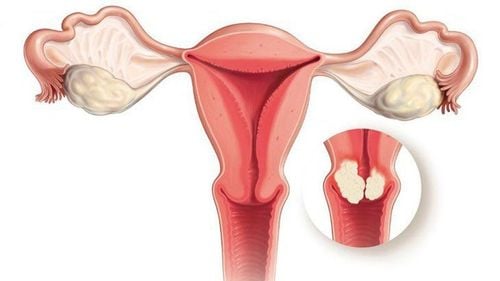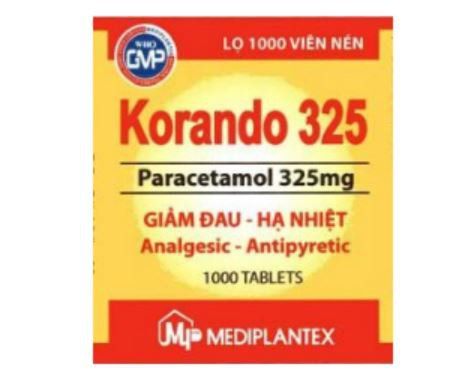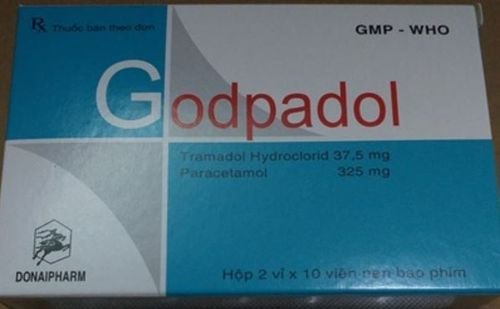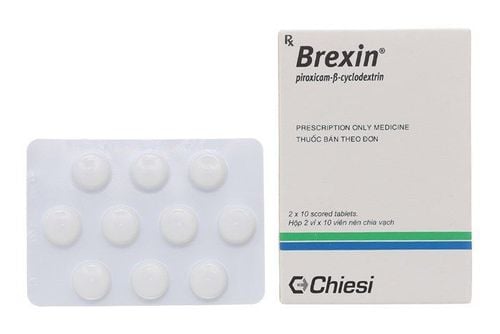This is an automatically translated article.
Xeroflam is classified as a drug for the treatment of acute and chronic pain related to joints and bones. With the main ingredient is Etoricoxib, learn about Xeroflam's uses, dosage, usage and side effects through the article below.
1. What is Xeroflam?
Xeroflam is an analgesic and antipyretic used in cases of acute and chronic pain caused by bone and joint diseases, gout (rheumatism), primary dysmenorrhea. With the main ingredient is Etoricoxib, Xeroflam is made in the form of film-coated tablets, the content of Etoricoxib in each tablet is 60mg, helping to relieve acute pain quickly and effectively. A box of Xeroflam contains 3 blisters, each blister contains 10 film-coated tablets.2. Uses of Xeroflam
Xeroflam is used to treat pain in arthritis diseases, such as rheumatoid arthritis, osteoarthritis, gouty arthritis, .... The main ingredient of the drug is Etoricoxib, an active ingredient. It is classified as a selective COX-2 inhibitor with non-steroidal anti-inflammatory effects.
Clinically, the active ingredient Etoricoxib is used a lot in cases where it is necessary to reduce pain and inflammation in the muscles of people with osteoarthritis, gout, ankylosing spondylitis.
Etoricoxib in Xeroflam is well absorbed from the gastrointestinal tract, so it is also indicated for oral use. With foods high in fat, drug absorption and time to peak blood concentrations of Xeroflam are also affected.
Peak plasma concentrations of Xeroflam are reached 3 hours after a single oral dose. The volume of distribution of the drug in tissues is large, and the percentage of drug bound to plasma proteins is also high.
Xeroflam is eliminated mainly in the urine as unchanged drug.
3. Indications for taking Xeroflam
With analgesic and tablet-reducing effects, Xeroflam is indicated in the following cases:
Acute and chronic osteoarthritis pain. Pain in ankylosing spondylitis. Pain caused by acute gouty arthritis. Relieves acute and chronic pain. Relieve primary dysmenorrhea.
4. Contraindications to using Xeroflam
Some of the following cases are contraindicated to use Xeroflam:
Patients with a history of hypersensitivity to Xeroflam or any of the ingredients listed on the drug leaflet Patients with a history of asthma, urticaria , allergic to Aspirin or non-steroidal anti-inflammatory drugs. Patients with congestive heart failure, hypertension, and uncontrolled blood pressure over 140/90. Patients with ischemia, peripheral artery disease or cerebrovascular disease. Child-Pugh cirrhosis score ≥ 10 or serum albumin < 25g/L. Do not use Xeroflam for patients with peptic ulcers, patients with gastrointestinal bleeding. People with severe progressive renal failure, ClCr<30mL/min
5. Dosage and how to use Xeroflam
How to take Xeroflam : The drug is indicated for oral use, so the patient needs to take it with a full glass of water.
Dosage of Xeroflam in each specific case
Osteoarthritis: 30mg/day or 60mg/day, taken once only. Rheumatoid arthritis, ankylosing spondylitis: The maximum can be used 90mg / time / day. Pain relief after dental surgery: Not more than 90mg/time/day, maximum dose is 3 days. Gout arthritis: Not more than 120mg/time/day, up to 8 days. Acute pain, primary dysmenorrhea: Not more than 120mg/time/day, up to 8 days. In the elderly, of the opposite sex and of other races, no dose adjustment is required. In patients with liver failure with Child-Pugh 5-6 value: Not more than 60mg/time/day. In patients with liver failure with Child-Pugh value 7-9: Not more than 60mg/time/2 days or 30mg/time/day. Patients with renal impairment with creatinine clearance more than 30ml/min: No dose adjustment is required.
6. Xeroflam side effects
Side effects of Xeroflam are reported to be quite diverse, not divided into rare or common. Therefore, users need to be very careful when using it.
Side effects include:
Thrombocytopenia, hyperkalemia. Hypersensitivity reactions, anaphylactic reactions/false anaphylaxis. Anxiety, insomnia, restless sleep, hallucinations. Depression, nervousness, palpitations, angina. Heart rhythm disturbances. Blurred vision. Paroxysmal hypertension. Abdominal pain, diarrhea, gastrointestinal ulceration, perforation and hemorrhage, vomiting. Hepatitis, jaundice, increased AST/ALT. Steve Johnson syndrome causes toxic epidermal necrolysis.
7. Precautions when using Xeroflam
Xeroflam has a lot of side effects on patients, so it is necessary to be cautious and careful when using it to avoid unwanted reactions from the drug, specifically when using Xeroflam, the following should be noted.
Xeroflam should be used at a low dose and for a short time, enough for an effective response. Caution should be exercised when administering to patients with obvious cardiovascular risk factors such as hypertension, hyperlipidemia, diabetes. Use with caution in patients with a history of perforation or ulceration of the stomach, gastrointestinal tract, elderly patients. Renal insufficiency in patients with acute asthma, urticaria, or rhinitis caused by salicylates or cyclooxygenase inhibitors. Use caution in patients being treated for infections. In patients with pre-existing water retention, hypertension, heart failure, fluid retention, edema, and hypertension should be monitored in these subjects. Monitor renal function in patients with renal failure receiving Xeroflam. For pregnant women, the drug should only be used during the first 2 trimesters if the benefits outweigh the risks. For lactating women, it is recommended that the drug be discontinued or not used. In children, it should not be used because the safety and effectiveness of the drug has not been established. Xeroflam is a pain reliever, anti-inflammatory used in arthritis, osteoarthritis and gout. Xeroflam is a prescription drug, with many serious side effects, so patients should not use it or adjust the dose without consulting a specialist.













